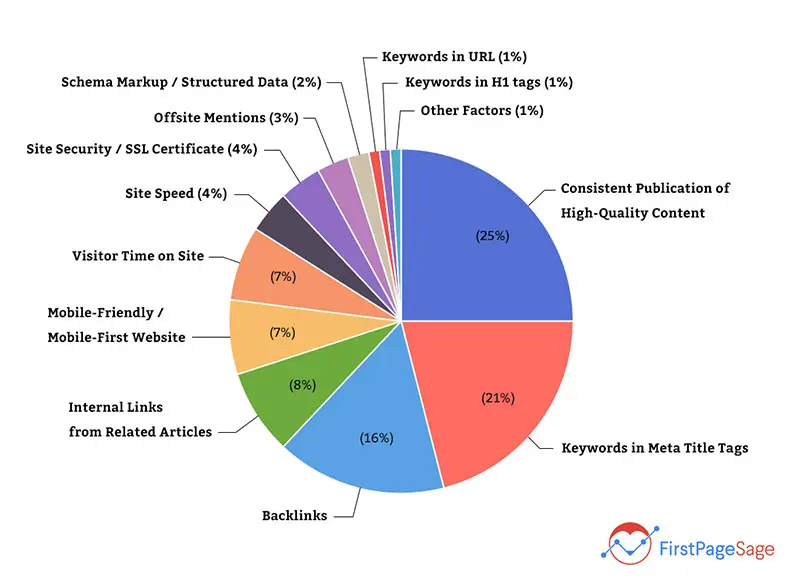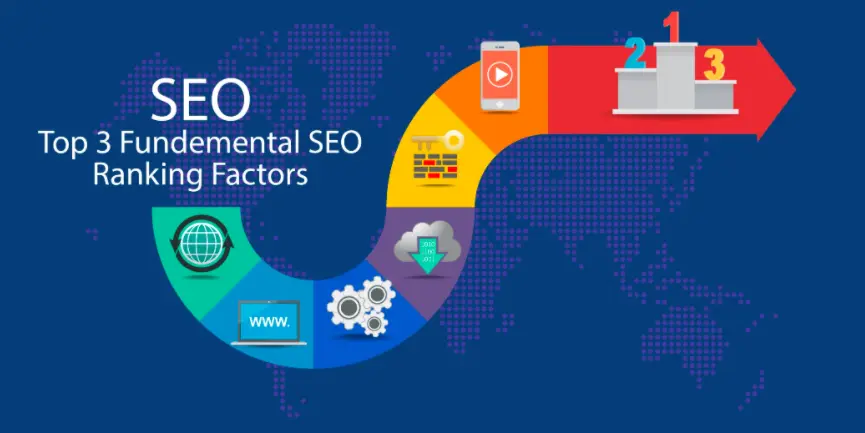SEO has been a buzzword among digital marketers for years now. It is something that everyone is talking about and searching for in the digital marketing community. In fact, the term “SEO” gets between 10k and 100k searches every month on Google. That clearly indicates the level of interest that people have.
However, if you are someone who has not yet joined the SEO bandwagon and want to know what all the buzz is about, then you’ve reached the right place. After reading this post, you will know all your SEO basics and the science behind how it works.
What is SEO? | The Ultimate Guide to Search Engine Optimization:
What is SEO?
In a nutshell, SEO (search engine optimisation) is the process of optimising your website to get more organic traffic.
This may include changing your website design, layout, content, and other technical and non-technical aspects to get the best results. Your website should be able to attract enough traffic on its own, without you paying for it.
This is a sustainable way of getting more website traffic in the long run and is worth the effort. This is why marketers are so invested in SEO and spend so much time and effort on it.
The whole SEO game is a race to get your website’s landing pages to rank on a search engine’s first page of results for a particular search query.
Let’s say you search for the term “Best lawyers in New York” on Google. You will see a search engine results page (SERP) that shows you relevant websites for your search query.
Here’s exactly what you will see:

Source: google.com
Let’s dissect these results one by one.
The first set of results are paid search ads that people pay for to get displayed right on top of Google SERP for this particular keyword.
Next, you can see a Google Map along with business listings for different lawyers. The next section is Google’s “people also ask” section that shows other search queries related to this one, along with answers.
Finally, you see ten different organic search listings for your search query. These ten organic search listings are what people compete for when they invest in SEO.
For any given keyword, there might be thousands of people who want to be among these ten search results on the first page of Google SERP. So, when you put efforts into SEO, this is the end result that you want.
Of course, you can rig the game and try to be listed in one of the three sections that were on top. However, ads cost a lot of money and can’t be run on a long-term basis, especially if you don’t have deep pockets. And, these are a part of search engine marketing (SEM) and not SEO.
You can definitely list yourself on Google My Business and try to be listed in the Google Maps section. This is a part of SEO called “local SEO” that is especially useful for local businesses, which is a topic for another time.
The focus of this article will be mainly on how you can get the maximum organic traffic, with the help of SEO. But, before we get into the details of how you can do that, you need to first understand how search engines work.
How Do Search Engines Work?
When a user types a search query into a search engine like Google, the search engine looks at millions of entries to show the most relevant search results in decreasing order of relevance. They have their own algorithms of how they do it and those often keep changing.

Image source: ahrefs.com
However, the basic rule remains the same—relevance. Any search engine will first show the pages that it thinks are the most relevant. They do this by performing a series of functions, as discussed below.
Crawling
This is the process where a search engine scours the internet for content.
Indexing
This is the process through which a search engine makes sense of the online content and stores and organises it.
For every online page, the search engine will try to understand the content and categorise it in the best possible manner. This way the search engine has a whole index or database of results that it can now display for the search queries that it gets.
Ranking

Source: firstpagesage.com
Ranking is the process through which a search engine decides which of the indexed pages should be shown first for a particular search query. The algorithm behind this often changes, but as marketers, you need to stay abreast of the latest changes.
SEO Fundamentals - How to Make SEO Work For You
As stated earlier, the dynamics of SEO keep changing and you need to stay updated on the latest trends and algorithm changes. However, there are some fundamental principles of SEO that remain the same.

Source: adssentialmarketing.com
These SEO fundamentals or strategies form the basis of how you can make it work for you and get more organic traffic for your website. Use the strategies mentioned below to cover the basics of SEO for your website.
Backlinks
Backlinks basically mean the links from other websites in your niche that direct traffic to your website. People link to other websites to direct their users to other useful content or to give credit for some information that they cited from your website.
The more reputable the websites that link to you, the better it is for your own website’s reputation. That is why you should aim to get backlinks from high domain authority websites in your field.
The quality of links on your website or landing pages matters a lot when it comes to search engines’ ranking criteria. The more high-quality backlinks that you have, the higher are your chances of ranking well.
Relevant Content
We cannot emphasise the importance of relevant content enough when it comes to SEO. This is probably the most important criterion of all when it comes to improving your search rankings.
All search engines strive to show the most relevant results to their users. This is the number one criterion for all search engines. That is why you need to focus on improving the quality of your website content to win at SEO.
What we mean by quality is that if you want a particular page to rank for a particular keyword, then it should provide value to people who are searching for that keyword.
Just stuffing random keywords to your content is not enough to rank well anymore. Your content should actually be useful and relevant for people that you’re targeting.
And, search engines are very good at detecting whether it is relevant and useful or not. Let’s say that you do rank well simply because you stuffed your content with keywords. You also get some traffic based on that.
However, those people will not stay on your website and will leave as soon as they see that your content is not solving their purpose. Search engines catch on to such online behaviour and consider it while assessing relevance.
Therefore, whatever content you create should be created keeping a specific target audience in mind. Think about what they would like to read when they are searching for a particular keyword.
If you simply start creating content with this mindset, you won’t need to rely on shady keyword-stuffing tactics anymore. If your content is useful and relevant, it will rank. Simple as that.
User Experience
This is another very important criterion that search engines consider for ranking pages. How users are responding to your website.
Some of the things that you need to ask yourself, to understand whether people have a good experience browsing your website or not, include:
- Are they spending time on it or simply leaving from the landing pages?
- How many people actually check out other pages on your website and not just the one they landed on?
- Does it take too long for your web pages to open?
- How easy or difficult is it for people to navigate your website?
It seems complicated, but it’s really not. It all boils down to simple and user-friendly website design.
SEO is not just about keywords and links. There is a whole side of SEO that deals with website design and user experience—technical SEO. A lot of beginners often ignore this aspect and focus only on keywords and links. However, your SEO initiatives are not complete without looking at this aspect as well.
Your goal should be to make it as easy for a person to navigate and browse through your website as possible. This might take some time to nail down, but it is worth the time and effort.
Links, content, and user experience are the three legs on which SEO stands. You get these right, and you’ve got all your bases covered.
What Next?
Now that you know all the basics of SEO, you need to start implementing these for your website. Start with the three fundamentals of SEO—backlinks, content, and user experience—and get them right.
However, your job is not done yet. Once you’ve aced these aspects, you can then research the other SEO tactics and strategies. SEO is not something that you do once and just expect it to last. This is a continuous effort and you should be ready to keep investing your time and effort in it in the long run.
All the best for your SEO initiatives!



